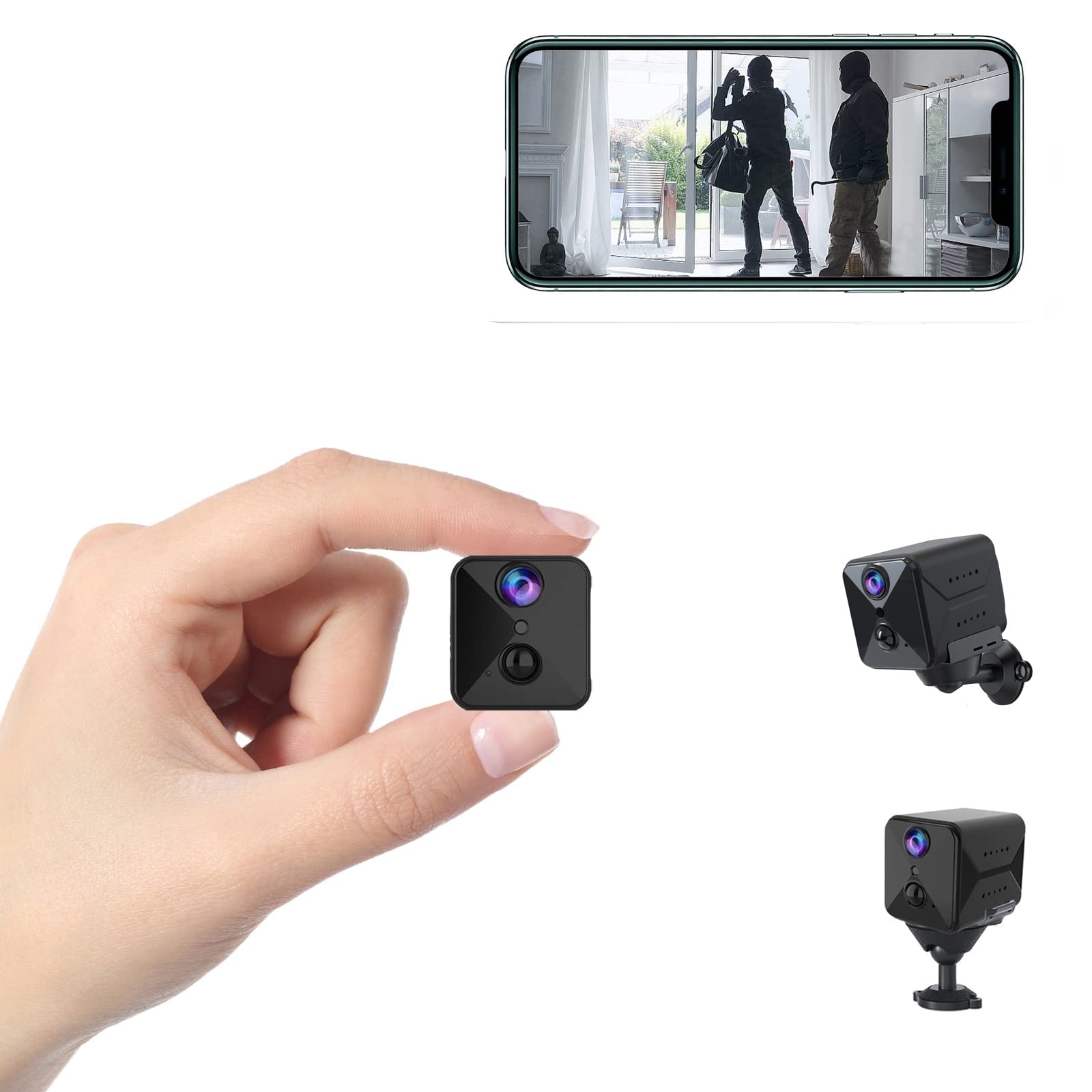Introduction
With the increasing use of smartphones, advanced technologies have made it easier for people to invade our privacy. One such invasion can occur through the installation of spy apps on our Android devices. Spy apps, also known as stalkerware, are malicious applications that can be installed on your phone without your knowledge or consent. These apps allow someone else to monitor your calls, messages, browsing history, and even track your location.
Discovering that your phone has a spy app installed can be a shocking and unsettling experience. Not only does it violate your privacy, but it also exposes you to potential security risks and compromises your personal data.
Fortunately, there are ways to detect and remove spy apps from your Android device. In this guide, we will explore the signs that indicate the presence of a spy app, the methods through which spy apps can get onto your phone, and most importantly, the steps you can take to eliminate these intrusive applications.
It’s essential to note that removing spy apps can be a complex process, requiring technical knowledge and attention to detail. However, by following the steps outlined in this guide, you can regain control of your phone’s privacy and protect your sensitive information.
In the next sections, we will discuss the signs that may indicate the presence of a spy app on your Android device, and the precautions you can take to prevent their installation in the first place. Furthermore, we will explore four different methods to remove spy apps, ranging from simple app uninstallation to more advanced procedures such as factory resetting your device and using anti-spyware software.
What are spy apps?
Spy apps, also known as stalkerware or monitoring apps, are apps that are designed to secretly monitor and track the activities of a person’s mobile device. These apps are often used with malicious intent, allowing someone to invade your privacy and obtain sensitive information without your knowledge or consent.
Spy apps have a range of capabilities that can pose serious risks to your privacy and security. Some of the common features of spy apps include:
- Call Monitoring: Spy apps can record incoming and outgoing calls, allowing the person monitoring your device to listen to your conversations.
- Message Tracking: These apps can intercept and read your text messages, as well as log your messaging app activity.
- Location Tracking: Spy apps can track your device’s location in real-time, allowing someone to know your whereabouts at any given moment.
- Browser History: They can monitor your web browsing activities and access your search history.
- Social Media Monitoring: Spy apps can track your social media activity, including posts, messages, and interactions.
- Keylogging: Some spy apps have the capability to record every keystroke made on your device, including passwords and sensitive information.
It is important to note that spy apps are not designed for legitimate purposes. While there are some legal applications available for parental control or employee monitoring, the majority of spy apps are created and used for malicious activities.
These apps can be installed on your Android device through various means, which we will discuss in the subsequent sections. The person installing the spy app may have physical access to your device, or they may use techniques such as phishing emails or malicious links to trick you into downloading the app.
Now that we have a basic understanding of what spy apps are and the potential risks they pose, let’s move on to the signs that may indicate the presence of a spy app on your Android device, as well as the precautions you can take to prevent their installation.
Signs that your phone has a spy app
Discovering that your phone has a spy app installed can be a daunting and concerning experience. It is essential to stay vigilant and be aware of the signs that may indicate the presence of a spy app on your Android device. Here are some of the common indicators:
- Battery Drain: If you notice that your phone’s battery is draining unusually fast, it could be a sign that a spy app is running in the background. Spy apps often require constant monitoring and data collection, which can put a significant strain on your device’s battery.
- Suspicious Data Usage: Spy apps need to send the collected data to the person monitoring your device. As a result, you may see a sudden increase in your data usage, even when you haven’t been using your phone excessively.
- Unusual Background Noise: Some spy apps can activate your phone’s microphone remotely, allowing the person monitoring your device to listen in on your conversations. If you hear strange noises, echoes, or static during calls, it could be a sign of a spy app.
- Random Reboots or Shutdowns: Spy apps can be resource-intensive and may cause your phone to behave unexpectedly. If your device frequently reboots or shuts down without any apparent reason, it could be due to the presence of a spy app.
- Slow Performance: Spy apps running in the background can consume a considerable amount of your device’s processing power, resulting in sluggish performance. If your device suddenly becomes slower, freezes, or crashes frequently, it may be a sign of a spy app.
- Unusual Behavior: Pay attention to any unusual behavior on your device, such as apps opening or closing on their own or unfamiliar apps appearing on your home screen. Spy apps often run in stealth mode, so any unexplained behavior could suggest their presence.
- High Mobile Data Usage: Spy apps may constantly send captured data to the person monitoring your device, resulting in high mobile data consumption. If you notice a significant increase in your data usage, especially when you’re not actively using data-intensive apps, it could be a red flag.
If you observe one or more of these signs, it is crucial to take immediate action to protect your privacy. In the upcoming sections, we will discuss the precautions you can take to prevent spy app installations and the methods you can use to remove these intrusive applications from your Android device.
How can spy apps get installed on your phone?
Spy apps can be installed on your phone in different ways, often without your knowledge or consent. It is essential to understand these methods to better protect yourself against the installation of spy apps. Here are some of the most common ways through which spy apps can get onto your Android device:
- Physical access: The most straightforward method for someone to install a spy app on your phone is by physically gaining access to it. They can quickly deploy the spy app while you are unaware, compromising your device’s security and your privacy.
- Malicious emails or messages: Hackers or attackers can send you emails or messages that contain malicious links or attachments. Clicking on these links or opening the attachments can lead to the installation of a spy app on your device.
- Downloading from untrusted sources: Installing apps from untrusted sources, such as third-party app stores or unofficial websites, increases the risk of downloading a spy app disguised as a legitimate application. It is crucial to only download apps from official app stores like Google Play Store to minimize this risk.
- Social engineering: Attackers may use social engineering techniques to manipulate you into installing a spy app. They could pose as a legitimate company or contact, convincing you to download and install an app that appears harmless but is, in fact, a spy app.
- Software vulnerabilities: Spy apps can also take advantage of security vulnerabilities in your device’s operating system or other apps. By exploiting these vulnerabilities, attackers can remotely install a spy app on your device without your consent.
- Pre-installed spyware: In some cases, spy apps may come pre-installed on certain Android devices, particularly those manufactured by lesser-known brands. These pre-installed spy apps can be disguised as system apps, making them difficult to detect and remove.
It is important to remain cautious and take preventive measures to minimize the risk of spy app installations. In the next section, we will discuss the precautions you can take to protect your Android device from spy apps.
Precautions to prevent spy app installation
While spy apps can be difficult to detect and remove, taking precautionary measures can significantly reduce the risk of their installation on your Android device. Here are some essential precautions you can take to protect your privacy:
- Keep your device updated: Regularly update your Android device’s operating system and all installed apps. Software updates often include security patches that address vulnerabilities that spy apps may exploit.
- Only download apps from trusted sources: Stick to downloading apps only from official app stores like the Google Play Store. Avoid downloading applications from third-party sources or unofficial websites, as these are more likely to distribute malicious or spyware-infected apps.
- Review app permissions: Before installing any app, carefully review the permissions it requests. Be suspicious if an app requires unnecessary permissions that seem unrelated to its functionality. Avoid granting permissions that may compromise your privacy or give excessive control over your device.
- Enable app verification: Enable the “Verify apps” option in your Android device’s settings. This security feature scans apps for malware and other threats before installation, providing an extra layer of protection against spy apps.
- Avoid clicking on suspicious links: Be cautious while clicking on links received through emails, messages, or social media platforms. Verify the source and authenticity of the link before clicking to avoid potential spy app installations.
- Use strong and unique passwords: Set strong, unique passwords for your device, app accounts, and online services. Avoid using easily guessable passwords or sharing them with others, as weak passwords can compromise the security of your device and provide unauthorized access.
- Regularly monitor your device: Keep an eye out for any unusual behavior, such as unexpected pop-ups, unfamiliar apps, or suspicious activities on your device. Regularly review your installed apps and running processes to identify any suspicious apps or background services.
- Install a trusted security app: Consider installing a reputable and reliable security app that can detect and protect against spy apps and other threats. Look for features like app scanning, malware detection, and real-time protection.
By following these precautions, you can significantly reduce the risk of spy app installations and protect your privacy on your Android device. However, if you suspect that a spy app is already present on your device, the next section will provide methods to detect and remove them effectively.
Method 1: Check and uninstall suspicious apps
One of the first steps in removing spy apps from your Android device is to check for and uninstall any suspicious or unknown applications that may be hiding on your device. Spy apps often disguise themselves as benign or legitimate apps, making it crucial to carefully review your installed apps for any signs of suspicious activity. Here’s how you can check and uninstall suspicious apps:
- Review installed apps: Go to your device’s settings and navigate to the “Apps” or “Applications” section. Here, you will find a list of all the apps installed on your device. Take your time to review each app and look for any unfamiliar or suspicious names.
- Look for hidden apps: Spy apps can hide their presence by disguising themselves as hidden or system apps. On your device’s app list, look for any apps that have generic names or icons, as well as apps that do not have an option to be uninstalled. These are potential indicators of hidden spy apps.
- Research unfamiliar apps: If you come across an app that you are unfamiliar with, do some research on it. Search for the app’s name online and read user reviews to determine if it is a legitimate app or potentially a spy app in disguise.
- Remove suspicious apps: If you find any apps that raise suspicion, uninstall them immediately. To uninstall an app, go to the app’s information page and select the “Uninstall” or “Remove” option. Note that some spy apps may try to protect themselves by disabling the uninstall option. In such cases, proceed to the next method for removal.
- Restart your device: After uninstalling any suspicious apps, it is recommended to restart your Android device. This helps ensure that any background processes or services associated with the spy app are terminated.
Checking and uninstalling suspicious apps can be an effective way to remove spy apps from your Android device. However, it is important to note that some spy apps can be cleverly disguised or hidden, making them difficult to detect through this method alone. In the next section, we will explore another method that can help remove spy apps more comprehensively: factory resetting your Android device.
Method 2: Factory reset your Android device
If you suspect that spy apps are deeply embedded in your Android device and uninstalling suspicious apps did not completely remove them, performing a factory reset can help eliminate them effectively. A factory reset restores your device to its original settings, erasing all data and applications. Here’s how you can perform a factory reset on your Android device:
Before proceeding with a factory reset, it is crucial to back up your important data. A factory reset will erase all data on your device, including contacts, messages, photos, and apps. Ensure that you have backed up your data to a secure location, such as cloud storage or an external device.
- Backup your data: Connect your device to a computer and transfer your important files, such as photos, videos, and documents. Alternatively, you can use cloud backup services or apps to save your data securely.
- Access the settings: Go to the settings menu on your Android device. The location of the settings may vary depending on your device’s manufacturer and version of Android.
- Find the reset option: Look for the “System,” “General Management,” or “Backup & Reset” option in the settings menu. Tap on it to access the reset options.
- Select factory reset: In the reset options, choose the “Factory data reset” or “Reset” option. You may be prompted to enter your device’s PIN or pattern lock to proceed.
- Confirm the reset: A warning message will appear, informing you that all data will be erased. Read the message carefully and confirm your decision to proceed with the factory reset.
- Perform the factory reset: After confirmation, your Android device will begin the factory reset process. This may take some time, and your device may restart multiple times during the process. Follow the on-screen instructions and do not interrupt the reset process.
- Set up your device: Once the factory reset is complete, your device will boot up as if it were new. Follow the setup instructions to restore your device’s settings and reinstall your apps. Take caution while reinstalling apps, ensuring that you download them from trusted sources.
A factory reset is a more comprehensive method of removing spy apps from your Android device, as it deletes all data and applications. However, it is important to remember that a factory reset also removes all personal data, so be sure to back up any important information before proceeding.
If you are unable to perform a factory reset or still suspect that spy apps persist even after the reset, the next section will explore an alternative method using anti-spyware software to detect and remove the intrusive applications.
Method 3: Update your Android device’s software
Updating your Android device’s software is an essential step in maintaining the security and integrity of your device. Software updates often include bug fixes, security patches, and improvements that can help protect against spy apps and other forms of malware. By keeping your device up to date, you can mitigate the risk of spy app installations. Here’s how you can update your Android device’s software:
- Check for updates: Go to your device’s settings and look for the “System” or “Software Update” option. The location of this option may vary depending on your device’s manufacturer and version of Android.
- Check for available updates: In the system or software update section, look for an option to check for available updates. Tap on it to allow your device to search for the latest updates.
- Download and install updates: If updates are available, your device will prompt you to download and install them. Ensure that you’re connected to a stable internet connection, as updates can be large in size. Follow the on-screen instructions to complete the update process.
- Restart your device: After the update is installed, it is recommended to restart your Android device. This helps ensure that the update takes effect and any underlying security improvements are applied.
Regularly updating your Android device’s software is crucial for staying protected against security vulnerabilities that spy apps may exploit. Set your device to automatically check for updates or periodically check for updates manually to ensure you have the latest security patches and bug fixes.
While updating your device’s software is an important preventative measure, it may not guarantee the detection and removal of existing spy apps. If you are still concerned about the presence of spy apps on your Android device, the next section will explore another method using anti-spyware software.
Method 4: Use anti-spyware software
Using anti-spyware software is an effective method to detect and remove spy apps from your Android device. Anti-spyware tools are specifically designed to scan your device for signs of malicious software, including spy apps, and provide you with the means to remove them. Here’s how you can use anti-spyware software to protect your device:
- Research and choose a reputable anti-spyware app: Look for trusted and reputable anti-spyware applications available on the Google Play Store. Read user reviews and ratings to ensure you select a reliable app.
- Install the anti-spyware app: Download and install the chosen anti-spyware app on your Android device. Grant any necessary permissions requested by the app.
- Run a full device scan: Open the anti-spyware app and initiate a full device scan. The scan may take some time, depending on the size of your device’s storage and the number of files it needs to analyze.
- Review scan results: Once the scan is completed, the anti-spyware app will display the results, indicating if any spy apps or suspicious files are detected. Review the scan results carefully.
- Remove spy apps: If the anti-spyware app identifies spy apps or malicious files, follow the app’s instructions to remove them from your device. The app may offer a one-click removal option or guide you through the process of manually removing the detected spy apps.
- Regularly update and use the anti-spyware app: Keep the anti-spyware app up to date by installing the latest updates. Regularly run scans to ensure ongoing protection against spy apps and other forms of malware.
Using anti-spyware software provides an additional layer of defense against spy apps and other malicious software on your Android device. It can help detect hidden spy apps that may be missed by other methods, and it often provides real-time protection against future threats.
It’s important to note that while anti-spyware software is effective, no tool can guarantee 100% detection and removal. Therefore, it is still recommended to practice other precautions, such as reviewing installed apps and being cautious of suspicious links or messages.
Now that you are familiar with various methods to remove spy apps from your Android device, you can take the necessary steps to protect your privacy and ensure the security of your personal data. By being proactive and staying vigilant, you can maintain control of your device and enjoy a safer digital experience.
Conclusion
The presence of spy apps on your Android device can be a major invasion of your privacy and compromise your security. However, by following the methods outlined in this guide, you can effectively detect and remove spy apps, protecting your personal information and regaining control of your device.
We started by understanding what spy apps are and the potential risks they pose. We then explored the signs that indicate the presence of a spy app on your device, such as battery drain, unusual background noise, and slow performance. Recognizing these signs is crucial in taking appropriate action.
Furthermore, we discussed the various methods to prevent spy app installations. By keeping your device updated, only downloading apps from trusted sources, and being cautious of suspicious links and messages, you can minimize the risk of spy apps infiltrating your device.
When it comes to removing spy apps, we explored several methods. You can start by checking and uninstalling suspicious apps, as well as performing a factory reset to completely wipe your device. Updating your Android device’s software not only enhances its functionality but also eliminates potential vulnerabilities that spy apps may exploit. Lastly, using anti-spyware software provides additional protection and helps detect and remove spy apps more comprehensively.
It is important to note that spy apps are constantly evolving, and new methods of invasion may emerge. To stay proactive in safeguarding your privacy, continue to stay informed about the latest security practices and regularly update your device and apps.
By taking these precautions and implementing the methods discussed, you can maintain the privacy of your personal information, protect your device from malicious invasions, and enjoy a secure and worry-free Android experience.

























